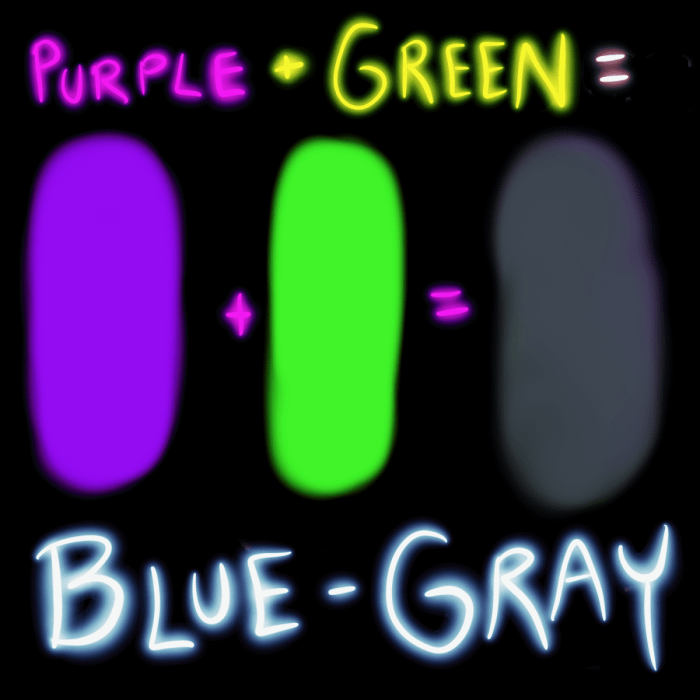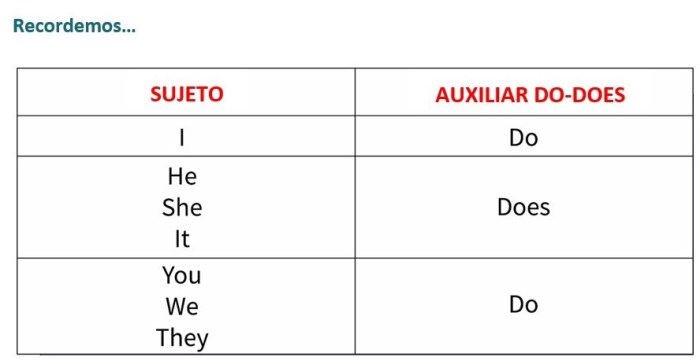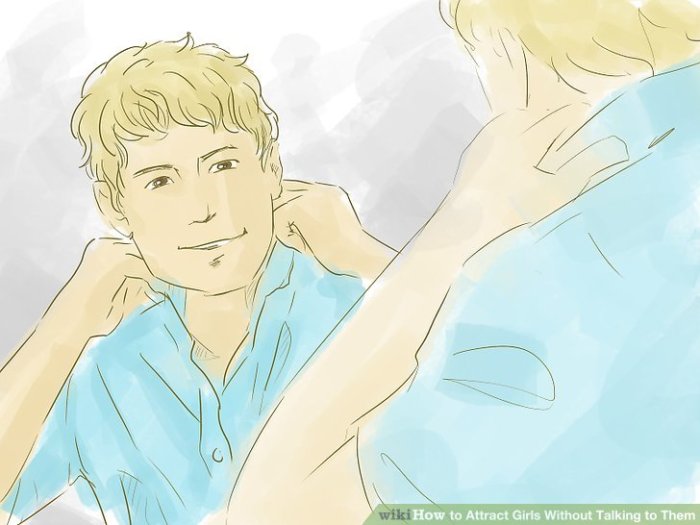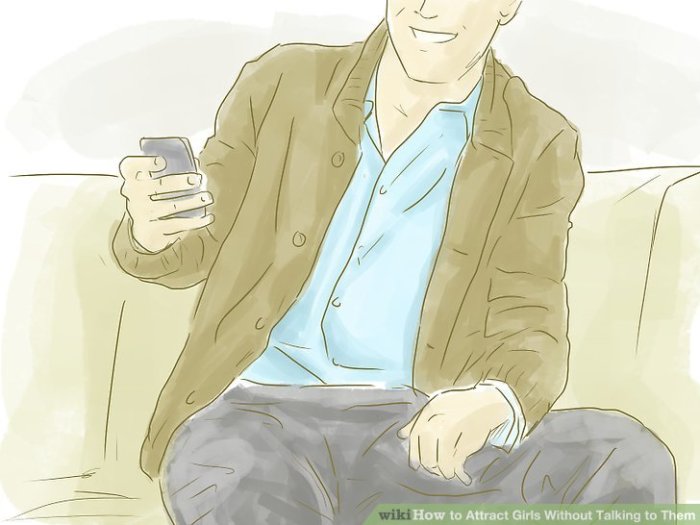What Does the Blushing Emoji Mean? This emoji, a simple red face with blush, packs a surprising amount of meaning. From shy smiles to playful embarrassment, its use can vary wildly depending on context and culture. We’ll explore the nuances of this seemingly simple digital expression, looking at how it’s interpreted across social media platforms, and examining its emotional weight.
Let’s dive in!
The blushing emoji is a fascinating window into the complexities of online communication. It often conveys emotions that are hard to put into words, allowing for a range of subtle expressions beyond the typical text-based conversation.
Interpretations of Blushing Emoji
The blushing emoji, a seemingly simple face with rosy cheeks, holds a surprising depth of meaning in online communication. Its interpretation isn’t always straightforward and can vary greatly depending on context, culture, and the specific platform it’s used on. This exploration dives into the multifaceted nature of this seemingly innocent digital expression.Understanding the nuances of the blushing emoji is crucial for effective online communication.
It allows us to appreciate the subtleties of human interaction in the digital realm, where tone and intent can be easily misinterpreted without visual cues.
Potential Interpretations
The blushing emoji can convey a wide range of emotions and intentions. It often signifies embarrassment, shyness, or a sense of warmth and affection. But its meaning is not limited to these basic interpretations. It can also express amusement, excitement, or even a playful attempt to soften a potentially harsh statement.
- Embarrassment/Shyness: This is perhaps the most common interpretation. The blushing emoji might be used to acknowledge a mistake, a silly comment, or a moment of self-consciousness.
- Warmth and Affection: The blushing emoji can also express a feeling of warmth, fondness, or affection. It can be used to soften a message or add a touch of playfulness to an interaction.
- Amusement/Excitement: In some cases, the blushing emoji can indicate amusement or excitement, especially in response to something funny or surprising.
- Playfulness/Softening a Message: The emoji can be strategically employed to lessen the impact of a potentially harsh statement or add a touch of humor to an otherwise serious conversation.
- Cultural Nuances: The emoji’s meaning might differ across cultures. In some cultures, blushing is associated with modesty, while in others it might be less significant.
Cultural Context
Cultural norms surrounding expressions of emotion play a significant role in how the blushing emoji is interpreted. In some cultures, public displays of emotion are more acceptable than in others, impacting how the emoji is employed and understood. A person from a culture where emotional restraint is valued might interpret the emoji differently than someone from a culture where expressing feelings openly is more common.
Usage in Online Communication
The blushing emoji is used in diverse ways in online interactions, reflecting the dynamic nature of online communication. The tone and intent behind its use vary greatly. It can be used to add a personal touch to a message, to express a range of emotions, or to mitigate potentially awkward situations.
- Adding a personal touch: Users might employ the blushing emoji to make a message more relatable or friendly.
- Expressing a range of emotions: The emoji can subtly convey emotions beyond embarrassment or shyness, like amusement or excitement.
- Mitigating awkward situations: The emoji can be a helpful tool for softening a potentially difficult conversation.
Comparison Across Social Media Platforms
| Platform | Common Interpretations | Examples | Nuances |
|---|---|---|---|
| Social Media A (e.g., Twitter) | Embarrassment, shyness, amusement, softening a message | “Oops, I made a typo! 😅” “That’s so funny! 🤣😂” |
Often used to lighten the tone of a message or add a personal touch. Context is key. |
| Social Media B (e.g., Instagram) | Affection, fondness, playfulness, excitement | “I love you! ❤️🥰” “OMG, so excited for this! 🤩” |
Frequently used to express positive emotions and connection. More direct expression of feelings. |
Blushing Emoji and Emotions
The blushing emoji, a simple representation of a face flushed with color, packs a surprising emotional punch. It’s a subtle yet powerful tool in digital communication, conveying a wide range of feelings from the seemingly innocent to the more complex. This nuanced expression allows for a more empathetic and human connection in online interactions, allowing users to express delicate emotions without relying on lengthy explanations.The blushing emoji is more than just a visual cue; it’s a shorthand for a spectrum of emotions, often signifying a feeling of social interaction.
Whether it’s the warmth of pleasure, the awkwardness of shyness, or the discomfort of embarrassment, the blushing emoji acts as a universal symbol of these often-unarticulated feelings. Understanding its versatility can greatly enhance our ability to interpret digital communication.
Range of Emotions Represented
The blushing emoji’s versatility stems from its ability to represent a broad spectrum of emotions, primarily those related to social interaction and self-consciousness. It’s not just about blushing; it’s about the underlying feelings that cause the flush. This allows for a wide range of interpretation.
So, what does the blushing emoji mean? It typically signifies embarrassment or shyness, right? But hey, with news of Dave Grohl, QOTSA, Josh Homme, and Led Zeppelin’s John Paul Jones teaming up , maybe it also suggests a whole lot of excitement and a touch of nervousness about what this new collaboration will bring! Still, a blushing emoji probably just means someone’s feeling a little warm inside.
Blushing Emoji and Specific Emotions
The blushing emoji effectively communicates shyness, embarrassment, or even pleasure. In situations where someone feels shy, the emoji can express the internal struggle and the hesitation to engage fully. For embarrassment, it reflects the discomfort and self-consciousness that accompany the situation. Conversely, a blushing emoji can also express the warmth and pleasure associated with a shared moment, signifying a positive emotional connection.
Comparison to Similar Emojis
Several other emojis evoke similar emotions. The winking face emoji, for instance, can express playful embarrassment or a hint of mischief. The smiling face with heart eyes emoji is commonly used for expressing romantic interest or affection. The difference lies in the nuanced level of expression. The blushing emoji is less direct, allowing for a wider interpretation based on the context of the conversation.
Emotional Spectrum of the Blushing Emoji
| Emotion | Description | Blushing Emoji Example | Similar Emojis |
|---|---|---|---|
| Shyness | A feeling of apprehension or discomfort in social situations, often accompanied by a desire to avoid attention. | blushing face emoji (e.g., 🙈) | Slightly smiling face, face with open mouth |
| Embarrassment | A feeling of discomfort or shame, often triggered by a mistake or a perceived social faux pas. | blushing face emoji (e.g., 🙈) | Face with open mouth, face with sweat droplets |
| Pleasure | A feeling of happiness or contentment, often associated with a positive experience or a shared moment. | blushing face emoji (e.g., 😊) | Smiling face with heart eyes, smiling face with smiling eyes |
| Affection | A feeling of fondness or care, often expressing warmth and closeness. | blushing face emoji (e.g., 😍) | Smiling face with heart eyes, face with smiling eyes |
Blushing Emoji in Different Communication Styles
The blushing emoji, a simple yet expressive face, plays a significant role in modern communication. Its usage extends beyond its literal meaning, often conveying a range of subtle emotions and nuances depending on the context and communication style. This discussion will explore the contexts where the blushing emoji is commonly used, its appropriateness in different settings, and how it affects the overall tone of a message.
We’ll also examine how it’s used to express subtler emotions across various communication styles.The blushing emoji’s impact transcends its literal depiction of a blushing face. It’s a versatile tool that can be employed to soften statements, express shyness, or convey a playful sense of embarrassment, adding layers of emotional context to online interactions. Understanding its application in various communication styles is key to deciphering its true meaning.
Common Usage Contexts
The blushing emoji is frequently used in a wide variety of contexts, reflecting its adaptability across different communication styles. Its usage is not limited to a specific genre or audience. It’s important to understand the nuanced ways in which this emoji can be employed.
- Romantic interactions: A blushing emoji can be a playful way to express affection, shyness, or excitement. It can soften a direct message or accompany a sweet compliment, adding a touch of warmth and vulnerability to the exchange.
- Friendly exchanges: In casual conversations with friends, the blushing emoji can express amusement, embarrassment, or a lighthearted acknowledgement of a humorous situation. It adds a layer of personal touch and emotional expression to the interaction.
- Professional settings: While less common, the blushing emoji can be used in professional contexts, but with extreme caution. Its use should be reserved for very informal communication or in situations where it conveys a specific emotion relevant to the context, such as expressing a playful response to a colleague’s joke.
- Expressing embarrassment or apology: The blushing emoji can effectively convey a sense of embarrassment or remorse in a lighthearted way. It’s a way to acknowledge a mistake or awkward moment without being overly formal or severe.
- Social media interactions: The blushing emoji is prevalent in social media, adding a personal touch to comments, posts, and interactions. Its usage often reflects the general tone of the platform and the prevailing culture.
Appropriateness in Different Settings
The appropriateness of using the blushing emoji depends heavily on the context and the relationship between the communicators. Its application is not universally appropriate across all situations.
Ever wondered what that blushing emoji signifies? It often expresses a feeling of embarrassment or shyness, similar to the slight hesitation you might feel when learning to drive smoothly with a manual transmission. Drive Smoothly with a Manual Transmission takes practice, and sometimes a little blushing at your own mistakes. Ultimately, the blushing emoji is a simple way to convey those feelings of awkwardness and self-consciousness.
- Informal settings: The blushing emoji is generally well-received in informal settings like chats with friends or family. It adds a personal touch and helps convey emotions more easily.
- Formal settings: Using the blushing emoji in formal settings, such as professional emails or business correspondence, is usually inappropriate. It can appear unprofessional and detract from the seriousness of the message.
Effect on Message Tone
The blushing emoji can significantly alter the tone of a message, adding layers of meaning that go beyond the literal words. Its effect on the overall impression is significant.
- Softening statements: The blushing emoji can soften a direct statement or criticism, making it appear less harsh and more apologetic or understanding. For example, “I’m sorry for the mistake” paired with a blushing emoji conveys a greater sense of remorse.
- Adding humor: The blushing emoji can be used humorously, particularly in playful interactions. It can add a touch of embarrassment or amusement to a message, making it more engaging.
- Expressing subtler emotions: The blushing emoji can be used to express subtler emotions like shyness, embarrassment, or affection. It adds a personal touch and emotional depth to the interaction.
Examples in Different Communication Styles
The blushing emoji’s usage varies across different communication styles, mirroring the nuances of human interaction. Understanding these variations helps in interpreting the true meaning behind the emoji.
- Romantic: “I love you! 🥰” + blushing emoji. This conveys affection, shyness, and a desire to express feelings in a vulnerable way.
- Friendly: “That was so funny! 🤣” + blushing emoji. This shows amusement and lighthearted embarrassment about the situation.
- Professional: “I apologize for the oversight in the report. 😞” + blushing emoji. This could be used very rarely, in a highly informal professional environment, and only if the sender is already well known and respected by the recipient. This is more likely to be received positively in a team setting with a close-knit dynamic.
Blushing Emoji and Gender: What Does The Blushing Emoji Mean

The blushing emoji, a simple visual representation of a flushed face, often carries nuanced meanings. Beyond its literal interpretation, its usage is frequently shaped by the sender’s and receiver’s gender identities and the cultural context in which it’s employed. This exploration delves into the potential gendered interpretations of the blushing emoji, considering biases, stereotypes, and the diverse ways individuals from various gender identities utilize it.The blushing emoji, while seemingly straightforward, can trigger different interpretations depending on the gender of the sender and receiver.
So, you’ve been wondering what that blushing emoji means? It generally signifies a feeling of embarrassment or shyness, right? But hey, sometimes it’s just a cute way to express mild amusement, or even a touch of excitement! Speaking of excitement, did you catch the War on Drugs debuting their new song “Ocean of Darkness” on Fallon last night?
Check it out here. It’s definitely got that blushing-worthy, emotionally charged vibe. Either way, the blushing emoji remains a great way to convey a range of soft, introspective emotions.
This stems from societal expectations and ingrained stereotypes surrounding emotional expression and gender roles. For instance, a woman sending a blushing emoji might be perceived as expressing shyness or embarrassment, while a man might be seen as overly emotional or even as exhibiting weakness. These interpretations can be influenced by implicit biases and societal expectations surrounding appropriate emotional displays for each gender.
Gendered Interpretations
Societal expectations often influence how the blushing emoji is interpreted based on the sender’s gender. A woman sending a blushing emoji in response to a compliment might be seen as expressing genuine pleasure or modesty. Conversely, a man sending the same emoji might be perceived as overly sensitive or lacking confidence. These differing interpretations highlight the role of gender stereotypes in shaping communication.
Potential Biases and Stereotypes
The blushing emoji can reinforce gender stereotypes. For example, if a man uses the blushing emoji, he might be subject to negative judgment or be perceived as being less assertive or less confident than he would be without the emoji. Similarly, a woman using the blushing emoji may be seen as less assertive or less capable in certain situations.
These biases can impact the overall interpretation of the message.
Blushing Emoji and Diverse Gender Identities
Individuals from various gender identities might utilize the blushing emoji in unique ways, reflecting their personal experiences and expressions of emotions. A non-binary individual, for example, might use the blushing emoji to express a range of emotions, from shyness to happiness, without being confined to gendered interpretations. Their use of the emoji would likely be shaped by their personal experiences and not by stereotypical gender norms.
Examples in Different Contexts, What Does the Blushing Emoji Mean
The blushing emoji’s usage can vary across different contexts. In a romantic context, a woman sending the blushing emoji to her partner might indicate affection or embarrassment. In a professional setting, however, the same emoji might be interpreted differently, perhaps as shyness or lack of confidence. The interpretation is strongly influenced by the overall tone and context of the communication.
Examples of Blushing Emoji Usage
| Context | Gender of Sender | Possible Interpretation |
|---|---|---|
| Romantic interaction | Woman | Expressing affection, embarrassment, or shyness. |
| Professional interaction | Man | Possible display of shyness, nervousness, or embarrassment. Could also be interpreted as a more playful or endearing tone, dependent on the context. |
| Friendship interaction | Non-binary | Expressing a range of emotions, from shyness to happiness, without being confined to gendered interpretations. |
Blushing Emoji and Nonverbal Communication
The blushing emoji, a simple visual representation of a person’s facial redness, is a powerful tool in modern digital communication. It acts as a nonverbal cue, conveying a range of emotions and social nuances that transcend the limitations of purely textual exchanges. Understanding its role in the broader context of nonverbal communication is key to interpreting its meaning effectively.The blushing emoji, while a digital construct, draws on a fundamental human experience: the physical manifestation of emotion.
Just as a blush on a person’s face can signal embarrassment, shyness, or even pleasure, the emoji serves as a shorthand representation of these same feelings. This allows for a rapid and efficient exchange of emotional context within online interactions. However, it’s important to recognize the limitations of such a simplified representation in comparison to the complexity of human nonverbal cues.
Comparing Blushing Emoji to Other Nonverbal Cues
The blushing emoji can be seen as a digital equivalent to the nonverbal cue of blushing in face-to-face interactions. Both signals typically indicate a similar emotional spectrum. However, the emoji lacks the richness of nuanced facial expressions and body language that accompany a real-life blush. A person blushing might also exhibit other nonverbal cues like averted gaze, fidgeting, or a slight stammer.
The emoji, in contrast, offers only a limited representation of these accompanying signals.
Examples of Blushing Emoji Usage
The blushing emoji can effectively replace or supplement nonverbal communication in various contexts. For instance, when someone expresses a heartfelt compliment, a blushing emoji can convey sincerity and warmth. In a playful exchange, it can signify amusement or shyness. In an apology, it can add a touch of humility and regret. These examples highlight the emoji’s ability to inject emotional context into otherwise neutral digital messages.
It’s crucial to consider the surrounding text and context when interpreting the emoji’s meaning.
Limitations of the Blushing Emoji
The blushing emoji, while effective in conveying basic emotions, has limitations. It cannot convey the complexity of human emotion. For example, a blush could indicate embarrassment, joy, or even a hint of romantic interest. The emoji, in its simplicity, fails to capture the subtle gradations of these emotions. It’s crucial to consider the overall context of the conversation to interpret the emoji accurately.
Blushing Emoji and Difficult-to-Express Emotions
The blushing emoji proves particularly useful for conveying emotions that are challenging to express verbally. A feeling of awkwardness, for example, might be difficult to articulate in words. The blushing emoji can concisely and accurately convey the feeling of being slightly out of place or uncomfortable. This applies to similar emotions, such as shyness or embarrassment, which are difficult to express fully through words alone.
Table Comparing Blushing Emoji to Other Visual Cues
| Nonverbal Cue | Description | Blushing Emoji Equivalent | Limitations |
|---|---|---|---|
| Blushing | A physiological response characterized by redness in the face, often accompanied by other nonverbal cues like averted gaze or fidgeting. | A digital representation of facial redness. | Cannot capture the nuance of accompanying body language or the specific context. |
| Smiling | A facial expression conveying happiness, friendliness, or amusement. | A smiling emoji. | Can lack the subtleties of a genuine smile, such as the crinkling of the eyes, or a sarcastic undertone. |
Last Recap

In conclusion, the blushing emoji, while seemingly straightforward, is a rich tapestry of meaning. Its interpretations are shaped by cultural norms, personal relationships, and the specific context of its use. From expressing shyness to conveying playful embarrassment, the blushing emoji provides a nuanced way to communicate emotions online. Understanding these nuances allows us to interpret these digital signals more accurately and effectively navigate online interactions.




